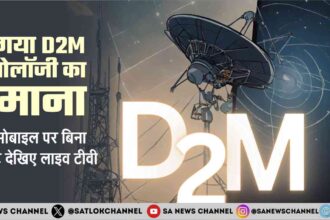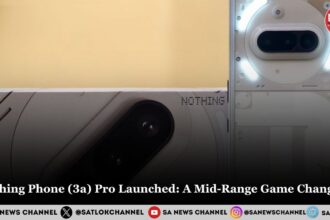As part of enhancing the speed of transitioning towards Electric Mobility in India, the Union Cabinet under the leadership of Hon’ble Prime Minister Shri Narendra Modi Ji has given its approval to the new scheme proposed by the Ministry of Heavy Industries (MHI), the “PM Electric Drive Revolution in Innovative Vehicle Enhancement (PM E-DRIVE) Scheme, with a two-year outlay of ₹ 10,900 crore which is a new scheme replacing FAME
- Key Highlights of the PM E-Drive Scheme
- 1. Total Outlay:
- 2. Focus Areas:
- 3. Subsidies and Demand Incentives:
- 4. E-Ambulances:
- 5. Electric Buses:
- 6. Electric Trucks:
- 7. Charging Infrastructure:
- 8. Upgradation of Testing Agencies:
- 9. No Incentives for Hybrid or Electric Cars:
- What is Special in the PM E-Drive Scheme?
- Subsidies and Demand Incentives:
- E-Vouchers for EV Buyers
- Support for E-Ambulances
- Investment in Electric Buses
- Promotion of Electric Trucks and Scrapping Incentives:
- Expansion of Fast Charging Infrastructure
- Modernization of Testing Agencies
- A Shift Away from Hybrid and Electric Cars
- The Controversy: Why were Electric Cars and Hybrids Ignored?
- The Impact on the EV Market
- Eternal Vehicle
- FAQs on the PM E-Drive Scheme
- 1. What is known as ‘PM E-Drive Scheme’?
- 2. Is there an E-Drive Scheme where the PM has considered to offer incentives to those who use hybrid or electric cars?
- 3. What is the extent of subsidy that is allowed under the PM E-Drive Scheme?
- 4. What has been planned to be procured under the scheme of electric buses?
- 5. How is the charging infrastructure being addressed by the PM E-Drive Scheme?
- 6. What are the procedures of availing the incentives under the PM E-Drive Scheme?
- Connect With Us on the Following Social Media Platforms
Key Highlights of the PM E-Drive Scheme
1. Total Outlay:
For supporting the electric mobility in India, ₹10,900 crore will be spent for period of two years.
2. Focus Areas:
– Seventy-nine lakh e-2 wheelers (e-2Ws), 3. Sixteen lakh e-3 wheelers (e-3Ws), and 14,028 electric buses (e-buses).
– There should be an encouragement of e-ambulances and e-trucks.
3. Subsidies and Demand Incentives:
– ₹3,679 crore was earmarked towards subsidies on various forms of electric vehicles (excluding hybrid and electric cars).
– Issuing Aadhaar authenticated electronic vouchers for undertaking incentive for demand side.
4. E-Ambulances:
– ₹500 Crore to be earmarked for procuring e-ambulance with enhanced technical parameters relating to safety and efficiency.
5. Electric Buses:
– ₹4,391 crore to bring 14,028 electric buses in major cities and for inter city / inter state transportation with focus on replacement of ageing and existing fleet.
6. Electric Trucks:
– ₹500 crore dedicated to encouraging e-trucks with special attention paid to vehicles from right scrap purchase centers.
7. Charging Infrastructure:
– ₹2,000 crore on deployment of over 72,000 fast chargers – 22,100 for e-4Ws, 1,800 for e-buses and 48,400 for e-2Ws / e-3Ws.
8. Upgradation of Testing Agencies:
– ₹780 crore to upgrade testing agencies, under MHI to support new and evolving forms of Ev technologies.
9. No Incentives for Hybrid or Electric Cars:
The scheme does not include incentives for Hybrid and electric cars and therefore only applies to other types of EVs.
What is Special in the PM E-Drive Scheme?
Subsidies and Demand Incentives:
The financial assistance being disbursed under the PM E-DRIVE Scheme is ₹3,679 crore and it will cover e-2 wheelers (e-2Ws), e-3 wheelers (e-3Ws), e-ambulances, e-trucks and emerging category of Electric Vehicles. It is reported that the scheme will affect more than twenty four thousand families of the community. 79 lakh e-2Ws, 16 lakh e-3Ws, and 14,028 e-buses to increase the market for green vehicles in the country.
E-Vouchers for EV Buyers
In a bid to eliminate most of the bureaucracy associated with the claiming of demand incentives, the scheme targets the implementation of an e-voucher system that EV buyers would have to go through.
On buying an EV, Aadhaar authenticated e-voucher will be created through the scheme portal which will be delivered to the digital mobile number of the buyer. This e-voucher has to be endorsed by the buyer and redeemed at the dealer to receive those incentives. The e-voucher will then be verified on the PM E-DRIVE portal to facilitate OEMs to claim on incentives offered to them by the dealers.
Support for E-Ambulances
Yet another enhancement of the PM E-DRIVE Scheme is the announcement to bring ₹ 500 crore to e-ambulances. This has been done with a view of implementing the government agenda of encouraging environmentally friendly means of transporting patients. The guidelines and parameters of performance and safety of these e-ambulances are expected to be drawn alongside the MoHFW, MoRTH and others.
Investment in Electric Buses
The scheme has Rs 4391 crore outlay for purchase of 14028 electric buses under different STUs and public transport entities. These buses are to be launched in nine most-populated cities, namely Delhi, Mumbai, Calcutta, Madras, Ahmedabad, Surat, Bangalore, Poona and Hyderabad with populations over 40,00,000. The deployment will focus on the swapping of old and used buses with new e-buses adopting MoRTH’s Vehicle Scrapping Scheme.
Promotion of Electric Trucks and Scrapping Incentives:
After pointing out that trucks are one of the biggest polluters, the scheme proposes ₹500 crore for subsidizing e-trucks. For these incentives, the applicant has to submit the scrapping certificate from the R VS F center which is approved by the MoRTH.
Expansion of Fast Charging Infrastructure
The PM E-DRIVE Scheme does address the potential issues related to the accessibility of charging infrastructure through the plan to setup more than 72000 common public charging points in India, especially focusing on fast chargers. This included provision of 22,100 fast chargers for electric four-wheelers (e-4Ws), 1,800 for e-buses, and 48,400 for e-2Ws & e-3Ws. This effort has been earmarked with an outlay of ₹2,000 crore.
Modernization of Testing Agencies
Realizing the increasing need of EVs, the scheme also envisages ₹780 crore for enhancing capacity of testing agencies of MHI for new and evolving technology to make Indian EV system, world–class and eco–friendly.
A Shift Away from Hybrid and Electric Cars
Hybrid and electrical automobiles, as important as it is to foster this technology for the broader transport technology, seem to be headed for a shift aside.
Also Read: Maharashtra CM Eknath Shinde Unveils Pod Taxi System in Mumbai’s BKC to Boost Urban Mobility
The PM E-DRIVE Scheme can be viewed as a step forward towards the promotion of electric mobility but it is rather striking that no incentives for hybrid and electric cars were offered. Government’s concentration on the other categories of EVs point towards a rather strategic maneuver of directing support to innovation and adoption of the electric transportation in the public and commercial sectors.
Making it even more common to understand that the PM E- DRIVES Scheme is the Indian government’s approach towards following up on its climate goals while promoting sustainable development and positioning India as a pioneer in the electric mobility market. However, if there are no incentives for hybrid and electric cars this may cause some controversy among the participants as this country is trying to define its journey towards sustainability.
The Controversy: Why were Electric Cars and Hybrids Ignored?
The government’s decision to exclude electric cars and hybrid cars from the PM E-Drive scheme is a significant departure from its previous stance. The FAME scheme, which the PM E-Drive replaces, provided incentives for both electric and hybrid vehicles. This change in policy has led to speculation about the government’s underlying motivations.
Some experts argue that the government’s focus on two-wheelers, three-wheelers, and commercial vehicles is a strategic move to address the country’s urban pollution and transportation challenges. These segments have a higher impact on daily commuting and last-mile connectivity. However, others contend that the exclusion of electric cars and hybrid cars could hinder the growth of the Indian EV market, particularly in the premium and luxury segments.
The Impact on the EV Market
The PM E-Drive scheme’s exclusion of electric cars and hybrid cars could have several implications for the Indian EV market:
- Slower Adoption of Electric Cars: Without government incentives, electric cars may remain relatively expensive for many consumers, limiting their adoption. This could hinder the growth of the Indian EV market as a whole.
- Reduced Competition: The absence of incentives for electric cars could reduce competition among manufacturers, potentially leading to higher prices and fewer options for consumers.
- Impact on Charging Infrastructure: A slower adoption of electric cars could also impact the development of charging infrastructure, which is crucial for the widespread adoption of EVs.
- Missed Opportunity for Innovation: The exclusion of electric cars and hybrid cars could limit opportunities for innovation and technological advancements in the Indian EV market.
Eternal Vehicle
The most important task of any vehicle is to transport souls several million miles from earth to eternal abode Satlok. It is known as SaarShabd. Know more about this by downloading the app ”Sant Rampal Ji Maharaj” and study thoroughly. No other vehicles can cover such a long distance in such a small time.
FAQs on the PM E-Drive Scheme
1. What is known as ‘PM E-Drive Scheme’?
The PM Electric Drive Revolution in Innovative Vehicle Enhancement (PM E-DRIVE) Scheme is a Governmental plan formulated to spread the electric mobility in India. The FAME-India is the successor of the FAME-II scheme and is Ear marked ₹10,900 crore and spans over two Financial Years.
2. Is there an E-Drive Scheme where the PM has considered to offer incentives to those who use hybrid or electric cars?
Well, it is a negative point, because PM E-Drive Scheme does not provide any encouragement for such vehicles as hybrid or electric ones. While it is a scheme on any other electric vehicles including e-2Ws, e-3Ws, e-buses, e-ambulances as well as e-trucks.
3. What is the extent of subsidy that is allowed under the PM E-Drive Scheme?
Subsidies amounting to ₹3,679 crore have been proposed under the scheme Electronic vehicles include two-wheelers, three-wheelers, buses, ambulance and trucks.
4. What has been planned to be procured under the scheme of electric buses?
As many as 14,028 electric buses will be procured for operation in nine cities having population of more than forty lakh. They are Delhi, Mumbai, Kolkata, Chennai, Ahmedabad, Surat, Banglore, Pune, Hyderabad and other tier one cities of India.
5. How is the charging infrastructure being addressed by the PM E-Drive Scheme?
The overall plan envisions setting up of over 72,000 fast chargers across the country in the light of which around 22,100 shall be earmarked for e-four wheelers, 1,800 for electric buses and 48,400 for e-two wheelers and e-three wheelers charging goals that will require an investment of ₹2,000 crore.
6. What are the procedures of availing the incentives under the PM E-Drive Scheme?
To get incentives, buy an eligible electric vehicle and follow the steps provided by the e-voucher presented in the scheme. The e-voucher will be created at the time of purchase and linked with Aadhaar for the purpose of subsidy and is further verified with the sign of the buyer and the dealer.









